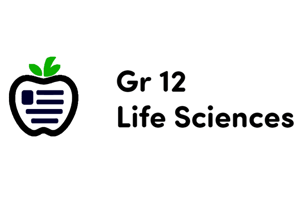Podcast
Questions and Answers
What is the first phase of the ovarian cycle?
What is the first phase of the ovarian cycle?
- Follicular Phase (correct)
- Ischemic Phase
- Menstrual Phase
- Luteal Phase
Which of the following is a type of menstrual disorder?
Which of the following is a type of menstrual disorder?
- Preeclampsia
- Endometriosis
- Dysmenorrhea
- Amenorrhea (correct)
During the luteal phase, the corpus luteum is active from days ___ to ___.
During the luteal phase, the corpus luteum is active from days ___ to ___.
14, 28
What hormone stimulates the release of FSH and LH during the menstrual cycle?
What hormone stimulates the release of FSH and LH during the menstrual cycle?
What is characterized by heavy and prolonged menstrual bleeding?
What is characterized by heavy and prolonged menstrual bleeding?
The Ischemic Phase occurs from days 22 to 28 of the menstrual cycle.
The Ischemic Phase occurs from days 22 to 28 of the menstrual cycle.
What phase of the menstrual cycle begins with shedding off of the endometrium?
What phase of the menstrual cycle begins with shedding off of the endometrium?
What is typically the mean age of onset for menopause?
What is typically the mean age of onset for menopause?
Flashcards are hidden until you start studying
Study Notes
Menstruation Topics
- During puberty, females experience physical changes including breast development, pubic hair growth, and the onset of menstruation.
- The menstrual cycle consists of four phases: follicular, luteal, secretory/post-ovulatory, and ischemic.
- The follicular phase (days 1-14) is marked by follicle growth and estrogen production.
- During the luteal phase (days 14-28), the corpus luteum becomes active and produces progesterone.
- The secretory/post-ovulatory phase is characterized by the glandular development of the uterine endometrium to create a corkscrew appearance.
- The ischemic phase (days 22-28) occurs if fertilization doesn't occur and the corpus luteum regresses, causing the uterine lining to shed.
Phases of Ovarian Cycle
- The follicular phase coincides with the menstrual phase, lasting from day 1 of menses to ovulation.
- During this phase, the release of follicle-stimulating hormone (FSH) and luteinizing hormone (LH) is initiated by gonadotropin-releasing hormone (GnRH).
- The luteal/secretory/post-ovulatory phase (days 14-28) follows ovulation, where the ruptured follicle remains on the ovary's surface.
- The corpus luteum, under the influence of LH, promotes the endometrial gland development.
Types of Menstrual Disorders
- Amenorrhea refers to the absence of menstruation. Primary amenorrhea occurs when menstruation doesn't begin at puberty, while secondary amenorrhea involves initially normal periods becoming irregular or absent.
- Premenstrual Syndrome (PMS) encompasses unpleasant sensations and discomfort during the premenstrual period.
- Menorrhagia is characterized by heavy and prolonged menstrual bleeding, often caused by abnormal uterine bleeding.
- Metrorrhagia involves bleeding between menstrual periods.
Phases of Uterine Cycle
- The menstrual phase marks the onset of menstruation (day 1) and involves the shedding of the uterine lining.
- During the proliferative/estrogen phase (days 4-5), the endometrium rebuilds, becoming thin.
- The secretory/luteal/progestational phase (days 15-21) is characterized by changes in the uterine lining due to the influence of progesterone.
Menopause
- Menopause signifies the cessation of menstruation, typically occurring between the ages of 40 and 55. The average age of menopause is 51.3 years.
Normal Menstrual Physiology - Hormones/Abbreviations Involved
- Estradiol (E), Progesterone (P), Gonadotropin-releasing hormone (GnRH), Follicle stimulating hormone (FSH), Luteinizing hormone (LH) are important hormones that regulate the menstrual cycle.
Composition of Menses
- The menstrual flow consists of blood, endometrial tissue, and mucus.
Studying That Suits You
Use AI to generate personalized quizzes and flashcards to suit your learning preferences.




